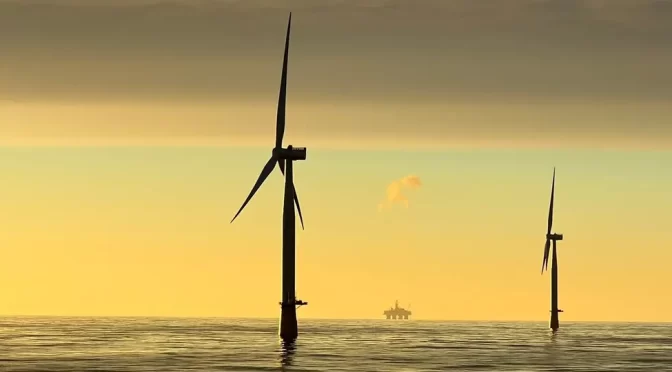The American Clean Power Association (ACP) commended the Department of Interior and the Bureau of Ocean Energy Management (BOEM) for holding a historic and successful wind energy lease sale that will position California as a global leader in floating offshore wind technology.
The offshore wind energy lease sale conducted by BOEM generated $757.1 million in revenue that will go to the U.S. Treasury.
The wind energy lease areas are in two regions on the Outer Continental Shelf off the California coast, covering 373,000 acres that will generate at least 4.5 gigawatts (GW) of reliable, carbon-free power—enough to power 1.5 million homes. The lease sale and development of the projects will help meet numerous critical state and federal targets, including California’s goals of deploying up to 5 GW of floating wind by 2031 and 25 GW by 2045, and achieving a zero emissions grid by 2045. The sale will also help keep the United States’ goals of deploying 30 gigawatts of offshore wind by 2030 and 15 GW of floating wind by 2035.
“This lease sale is a historic step for California’s decarbonization goals and shows the potential for floating offshore wind technology. California is set to become a pioneer in floating wind technology that will lower energy costs and increase grid reliability.” said JC Sandberg, ACP’s Interim CEO and Chief Advocacy Officer. “We applaud the companies that are advancing the deployment of floating offshore wind technology.”
According to the National Renewable Energy Laboratory (NREL), water depths of around 60 meters represent the limit where fixed-bottom support structures can be placed and floating substructures are needed. As most of the world’s usable offshore wind resources exist at depths greater than 60 meters, there is a strong economic incentive to develop floating offshore wind technology that can make capturing these resources cost competitive.
“This sale shows strong interest in the California floating wind market and is clear validation of BOEM’s leasing process.” said Sandberg.
With only several floating offshore wind projects in Europe and Asia, California is set to become a hub for floating offshore wind technology as a result of the lease sale. The lease auctions to date on the East Coast have been focused on shallower waters where turbines use fixed bottom platforms attached to the ocean floor.
The U.S. offshore wind industry is investing billions of dollars in a domestic supply chain, including investments in fabrication facilities, port upgrades, vessels, and workforce training. The deployment of 30 GW of offshore wind could create up to 83,000 jobs and $25 billion in annual economic output.
BOEM’s lease sale was the result of extensive environmental reviews and significant engagement with a diverse group of stakeholders including states, maritime industries, commercial fisheries, non-governmental organizations, and an extensive public comment period.
The commercial lease gives the awardee the exclusive right to propose a project in the area and obtain federal review of its proposal. BOEM aims to permit 25 GW of offshore wind by 2025 to ensure the country’s goal of deploying 30 GW of offshore wind by 2030. BOEM has previously held 9 competitive lease sales for commercial wind energy leases off the Atlantic Coast and has laid out a plan to ensure the U.S. can grow the offshore wind sector. Oregon is expected to follow California with a lease auction as soon as the summer of 2024.


